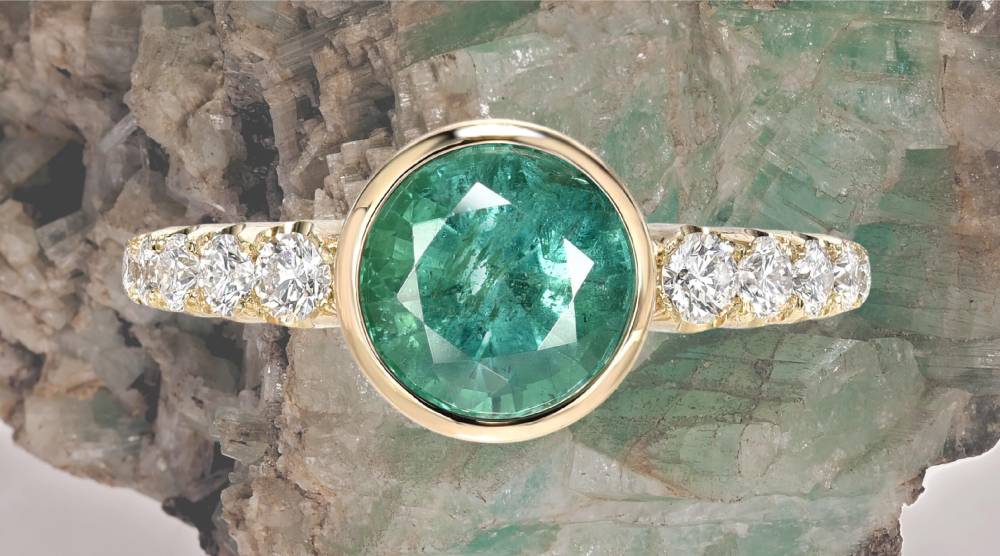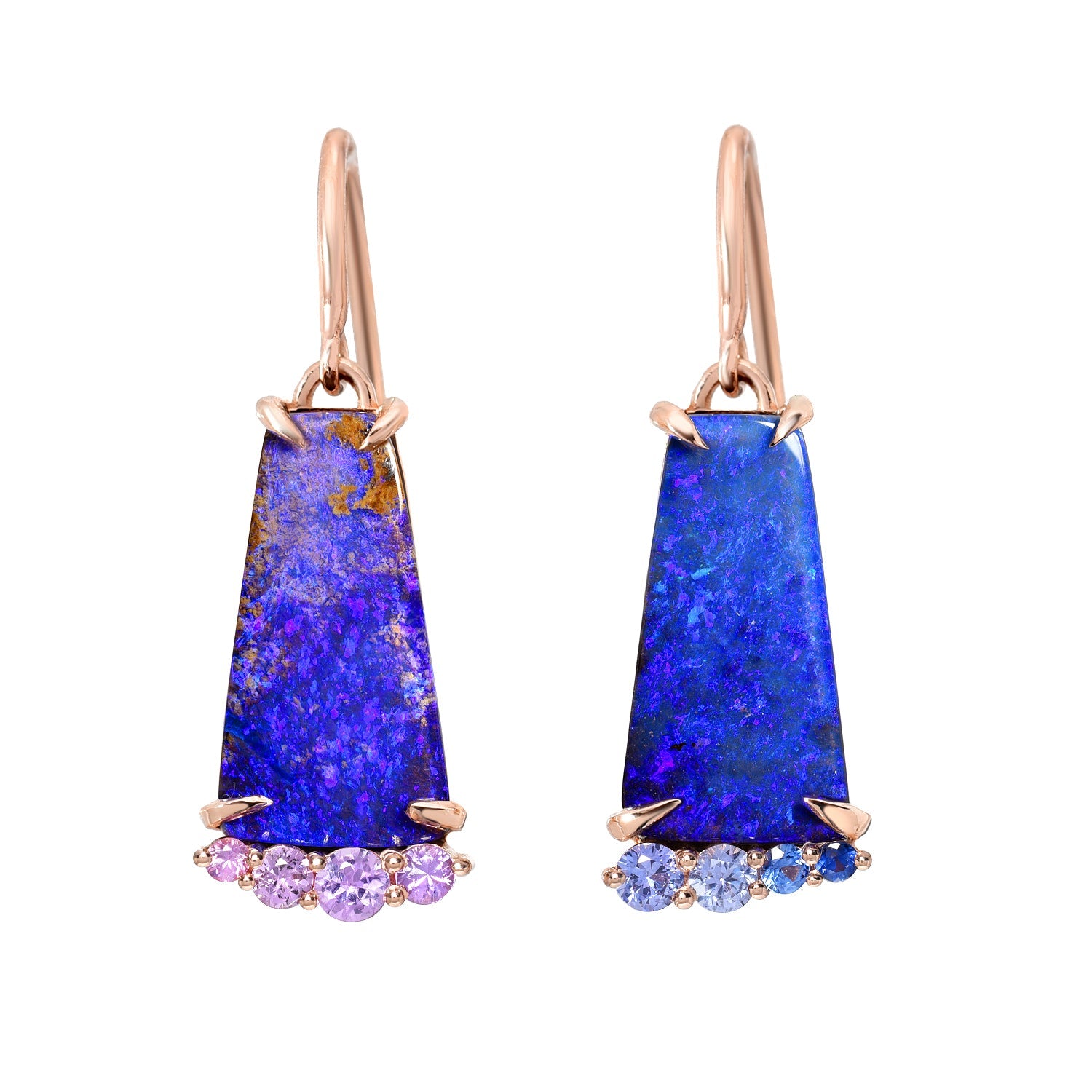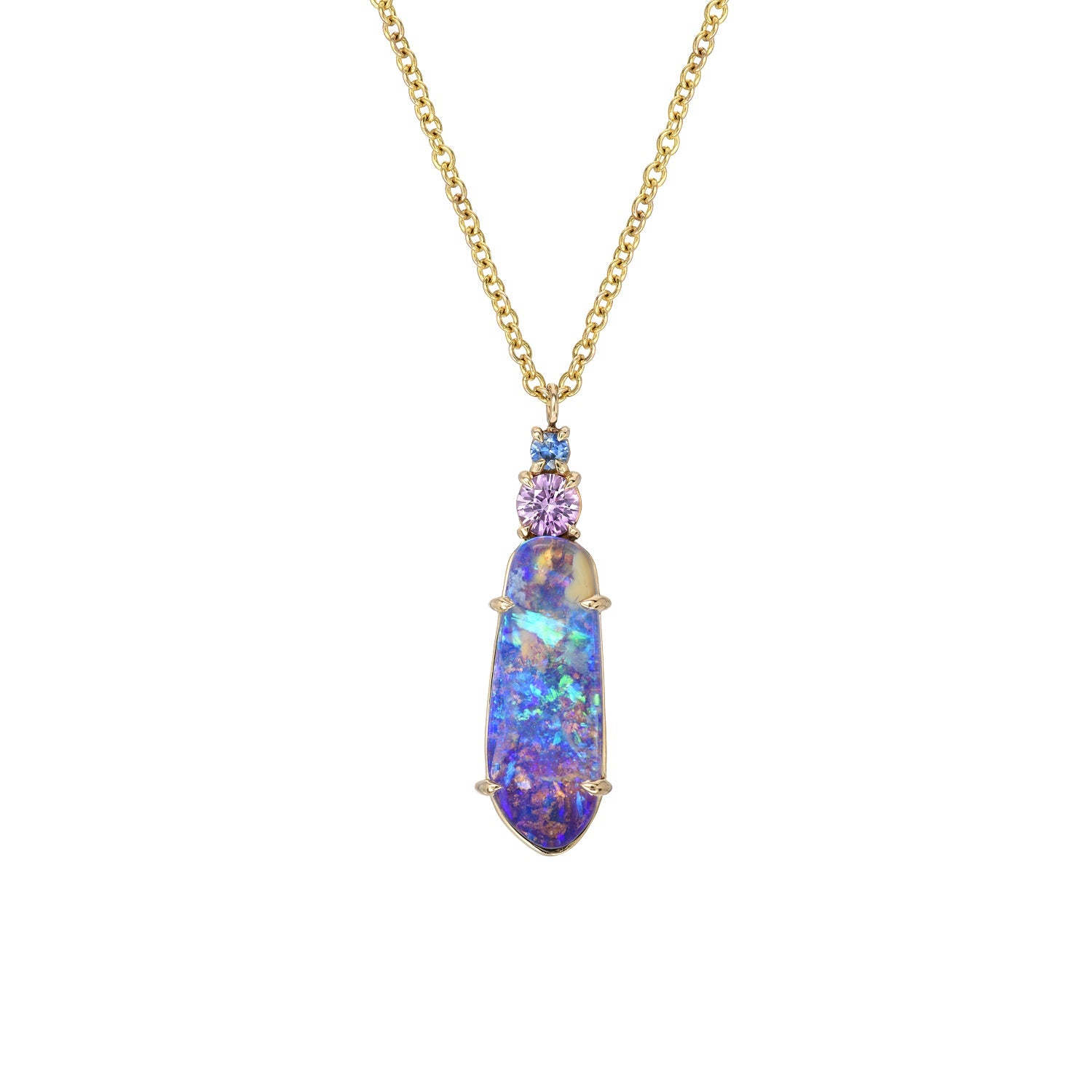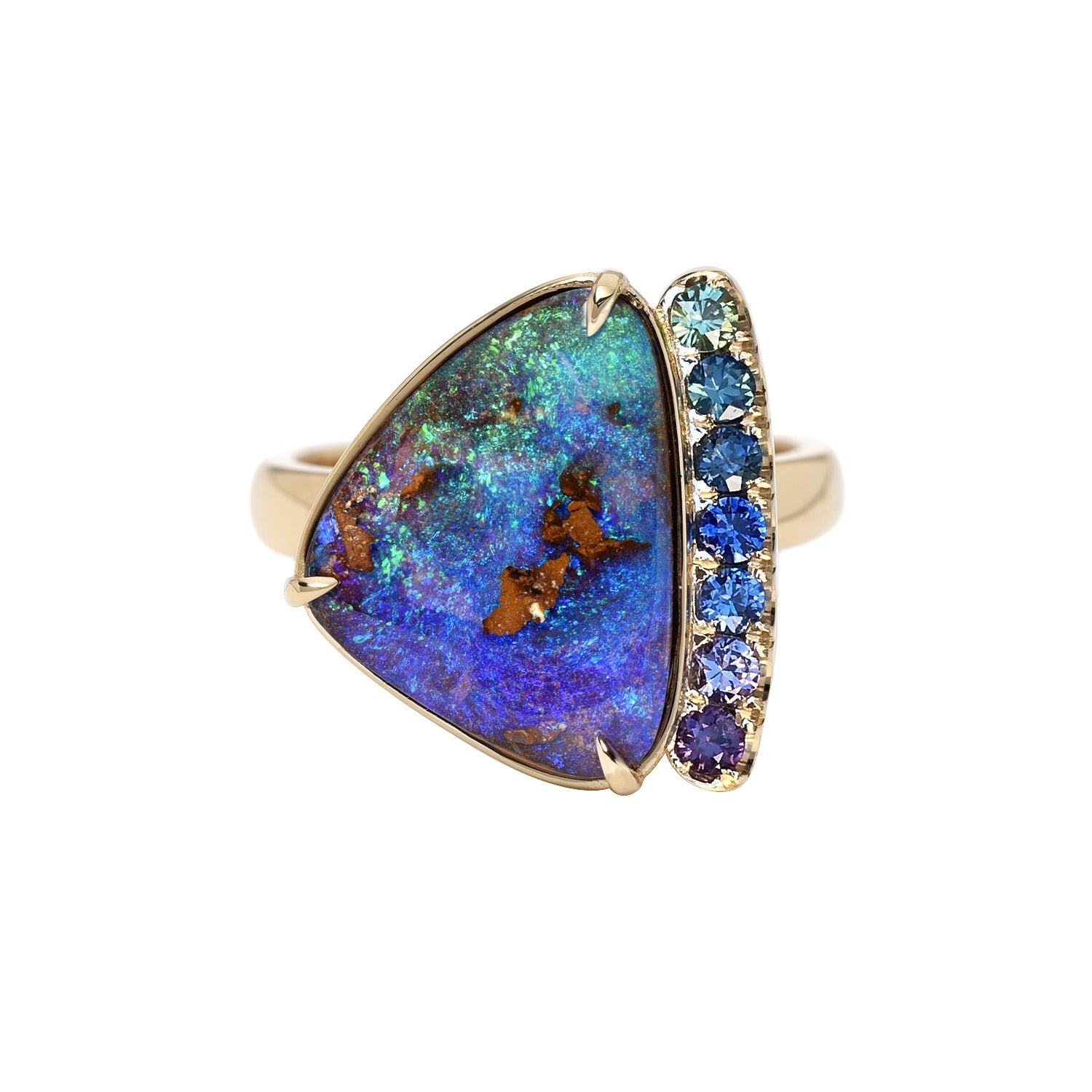
Emeralds --- The Green Gem That Enchanted the World
luis gomezShare
Emeralds are unique and coveted gemstones that, like diamonds, sync up beautifully with the luster of Opals. They complement each other in colorful and lavish ways, highlighting the very best features of one another. Here at NIXIN, we love using emeralds and other colored gems to design vibrant and chromatic pieces, as well as to adorn our Opals with them to create Opal jewelry that is truly one-of-a-kind. We strive to create positively jaw-dropping pieces — no matter what gemstone we use. In this article, we’re going to explore the world of emeralds; their properties, their origin, their etymology, and also their history and a bit of their lore.
What are Emeralds?

Emeralds, like Opals, are a gemstone and a variety of mineral — more specifically, they belong to the beryl mineral family. The mineral is colored green due to trace amounts of chromium or vanadium, and iron can contribute a bluish tint to the stone. According to Webster’s Dictionary, the word “emerald” was first used during the Middle Ages in the 14th century - it came from Vulgar Latin. Its etymological root can be traced back to ancient Greece, to the word “smaragdos” which means “green gem.”
Among precious gemstones, emeralds are considered one of the “Big Four.” They hold the same importance as diamonds, sapphires, and rubies — to some they are held in the highest regard.
Properties and Facts about Emeralds
It’s important to understand some of the properties of emeralds, let’s talk about them:
- Emeralds, like all gemstones, are graded using four basic criteria. In gemology and the jewelry industry, those parameters are known as the Four Cs of gemstone valuation — They are, color, clarity, cut, and carat weight.
- When it comes to emeralds, color is the most important of the Four Cs, followed very closely by clarity.
- The finest emeralds that will drive the highest market value, must possess the right shade of verdant green, their color must be evenly distributed throughout the stone (ie: no obvious color zoning), and they must display a high degree of transparency. This triumphant combination, in a gemstone well known to have inclusions, can command steep prices.
- Interestingly, there has been some disagreement as to the role of the elements in emeralds — which combinations constitute an emerald vs. green beryl.
- Though Colombian Emeralds are often a purer green hue and Zambian Emeralds a more blue hued green, this origin signaling does not always hold true — their shades can, and do, range.

Waimea Canyon Emerald and Australian Opal Ring
- Emeralds are found in igneous, metamorphic, and sedimentary rocks.
- They are extremely hard. On the Mohs scale they rate 7.5-8 — Diamonds, for example, are a ten. In spite of their hardness, they can still be quite brittle.
- Emeralds, along with Opals, were among Cleopatra’s favorite gems.
- In ancient Rome, physicians used to employ emeralds. They believed the gemstone could restore fatigued sight and aid with childbirth and infertility.
- Emeralds are the official gemstones to celebrate a 20th or 55th wedding anniversary.
- Emeralds are the birthstone of May.
- There is currently a form of synthetic emerald available that first appeared on the market in 1960 (an even older method of synthesis pre-dates the current one by approximately 30 years).
History of Emeralds
The oldest known emeralds are about 2.97 billion years old, however it wasn’t until around 1500 B.C., in the reign of the Egyptians, that the gemstone began to be excavated. The Egyptians believed in its healing powers and later it was traded as a financial asset.
Although emeralds could be found in small numbers across the globe, Egypt remained the primary source for the green gem until the Spanish — first by way of Columbus and later Cortés and Gonzalo Jiménez de Quesada — happened upon South America, and eventually set their sights on Colombia. It’s been said that Cortés was taken aback by the beauty of the vivid green gemstone he saw draped around the Aztec emperor, Montezuma. The Incan emerald treasure received similar reaction just a few years later by yet another Spanish conquistador, further driving the Spaniard's captivation with the stone. These Colombian Emeralds were a class of their own; glowing and green, far superior in color and quality to the less vibrant and included emeralds from Egypt that the Europeans had become accustomed to. Rife with desire for the enviable gem, Gonzalo Jiménez de Quesada sought out the emerald mines and plundered them with his 16th-century army of conquistadors. By that time, emeralds had already been woven into the native South American way of life, as they had been using the gemstone in their jewelry and religious rites, for more than 500 years.
It took the Spaniards over 20 years to find the well-hidden and prized emerald mines of Colombia.
The appropriation of the Colombian emerald mines triggered a surge in the emerald industry and was one of the driving forces behind the Spaniard’s push into South America. The Spanish crown wanted to build up their war chest, and although they weren’t initially partial to emeralds - they preferred precious metals which could easily be traded in Europe - emeralds could be traded for gold or silver. Where? In Asia.
Today, emeralds are primarily used in jewelry making and astrology. It’s one of the most used stones by astrologers since it is a Panna gemstone, regarded as the stone of prosperity, and it relates to the planet mercury.
Emerald Mines
Emeralds were first mined in Egypt, primarily out of two locations; Zabara and Sikait. The Romans referred to the Sikait region as Mons Smaragdus which translates to Emerald Mountain.The Egyptian mines were exploited and depleted by the Roman and Byzantine empires and finally by Islamic conquerors. Today, there is nothing left — just tourist attractions and ruins of what was once an emerald mecca.
Over the years, a range of locations around the globe known to produce emeralds have come to light, including, but not limited to Austria, Ethiopia, Afghanistan, India and even North Carolina here in the US. However most locations face significant rate limiting steps to commercially mining emeralds, be it lack of quality gemstone material, difficult terrain, political unrest, the disproportionate cost of mining in the region or some other equally insurmountable obstacle. The result is few locations producing high quality commercial emeralds.
The best known emeralds currently on the market come from Colombia. The 3 main emerald regions in Colombia are Chivor, Muzo, and Coscuez. Colombia is also one of the only places on the planet where the rare Trapiche emerald can be found. This is a deep green emerald with ray-like streaks and dark beautiful impurities.
The second-largest producer of emeralds in the world is Zambia, with its Kafubu River deposits supplying much of the high grade gem material. Brazil is currently the third key source for emeralds.
It’s important to note that emeralds can be found worldwide, from Russia to Australia. Nevertheless in small deposits — not enough to merit a large-scale mining investment. Thankfully, this isn’t of concern with the spectacular array of choices available with the emerald mines currently active.
Here at NIXIN Jewelry we love the variety of hues these emerald mines have to offer — come see how we design around Zambian and Colombian emeralds (spoiler alert: you ‘might’ see some opals alongside them).



